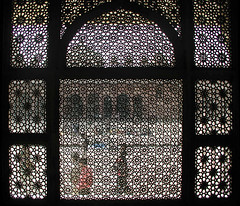Awaiting
For Brussels
For Brussels
Famous politicians
Condoling families of the victims
Flags lowered to half mast
Fluttering mournfully in the wind.
The world dressed
In bloodstained lace
And declared : “I am Belgian!”
Europe wakes up from its sleep.
It does not need candles, flowers
Or prayers for the dead.
It demands
action!


The Belgian lace trade rose during the early Renaissance. Holy Roman Emperor Charles V decreed lace-making be a compulsory skill taught to girls in convents and beguinages throughout what was then Flanders. (A beguinage was an architectural complex which housed beguines -- lay religious women who lived communally without taking vows or retiring from the world. They were named after an early proponent. Lambert le Bègue, "Lambert the Stammerer", who died ca. 1180. Small, informal, and usually poor communities emerged across Europe in the 12th century, and larger, more stable "court beguinages" emerged in the Low Countries early in 13th century.) The trade reached a peak in the 18th century, but hundreds of craftswomen still work in Bruges and Brussels, centers of bobbin lace, creating intricate work by hand, often using over 100 threads per bobbin.
ReplyDelete